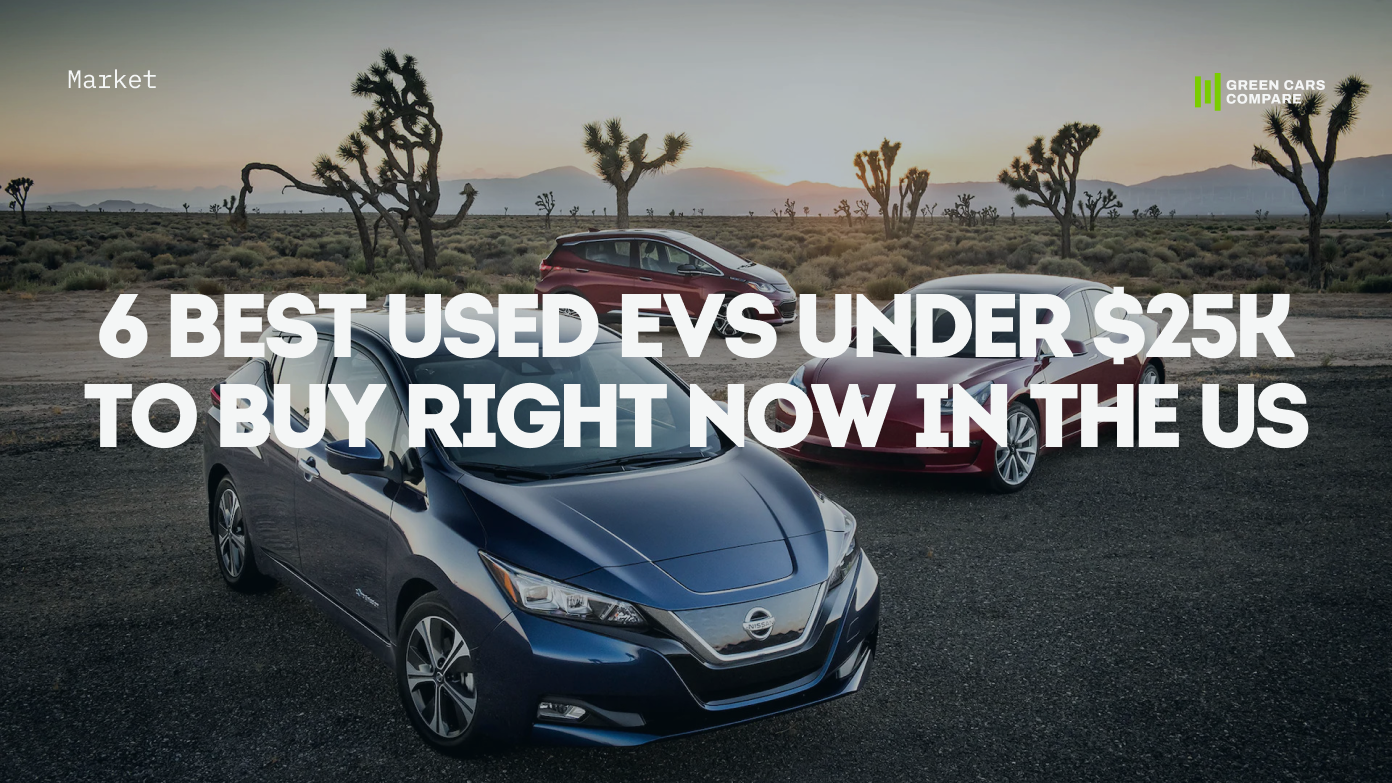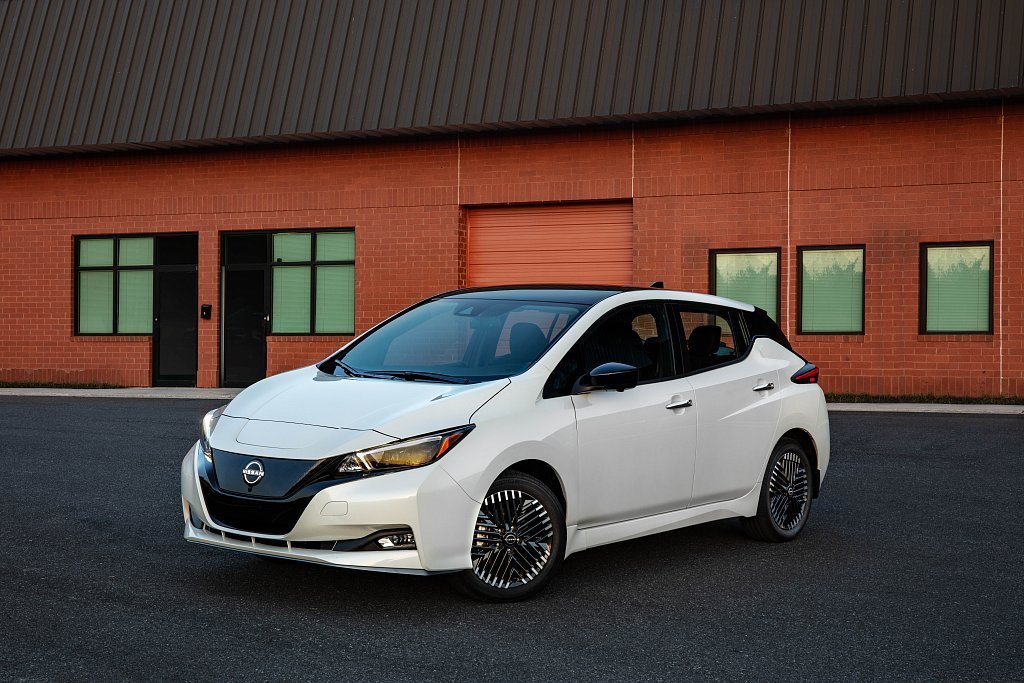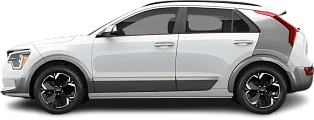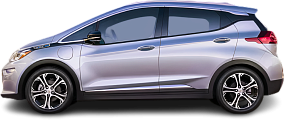6 Best Used Electric Cars Under $25,000 to Buy Right Now in the US

Recent months have demonstrated that now is a prime time to purchase a used electric vehicle. Numerous models, once considered cutting-edge, are now available at significantly reduced prices. These vehicles retain their impressive capabilities and offer excellent value for money.
Finding a high-quality electric vehicle doesn't have to break the bank. If you're on the market for an affordable and reliable electric car, there are plenty of great options available under $25,000. From impressive range and fast charging capabilities to stylish designs and strong resale values, these vehicles offer a lot of bang for your buck.
In this guide, we've rounded up the top six used electric vehicles that provide the best combination of performance, value, and features within this budget. Whether you're looking for a compact city car or a spacious SUV, our list has something for everyone.
It's also important to note that all used vehicles in this budget segment qualify for a federal income tax credit. The credit is 30% of the purchase price, up to a maximum of $4,000. To be eligible, the car must be bought from a dealer and be no more than two model years older than the current calendar year. To find out if you qualify for any additional rebates or programs in your area, check out the Green Cars Compare EV Incentives Map.
Let's dive into our top picks and see what makes each one a standout choice.
Table of Contents
1. Tesla Model 3

Among pre-owned electric vehicles priced below $25,000, the Tesla Model 3 stands out as our top pick. This popular model offers a compelling combination of range, performance, and value. Let's explore the advantages and disadvantages of the Model 3 to see why it earned the top spot.
Advantages
- Exceptional Range: The Tesla Model 3 is known for its exceptional range capabilities. Many trims offer an EPA-estimated range exceeding 300 miles, making it a top choice for those seeking long-distance electric driving.
- Exhilarating Acceleration: The Tesla Model 3 is known for its impressive acceleration. Most trims can reach 60 mph in under 5.5 seconds, providing a thrilling driving experience. If you're seeking the ultimate performance, the Model 3 Performance delivers a staggering 0-60 mph time of around 3.3 seconds.
- DC Fast Charging: All Model 3 trims support DC charging speeds over 170 kW, some can even achieve up to 250 kW, making it one of the fastest-charging vehicles in its price range.
- Multiple Trim Levels: The Model 3 is the only car on our list, aside from the Tesla Model S, that offers both RWD and AWD versions. If you're looking for an AWD car within this budget, the Model 3 is one of the top contenders.
- High Market Demand: The Tesla Model 3 is one of the most popular electric vehicles in the USA, making it easier to find well-maintained models and potentially resell them in the future.
- Tesla Supercharger Network: Tesla offers an extensive network of Superchargers, providing convenient and fast charging options for all Tesla owners across the country.
- Autopilot Feature: The Model 3 offers a standard Autopilot system, including features like lane keeping assist, adaptive cruise control, and automatic emergency braking. For full self-driving capabilities, such as automatic lane changes and navigation, the Full Self-Driving package is available for an additional $8,000.
Disadvantages
- No Apple CarPlay/Android Auto: While Tesla's infotainment system is powerful, the absence of Apple CarPlay or Android Auto limits smartphone integration for users.
- Slow AC Charging Speed: The Standard Range and Mid Range trims come with a 7.7 kW on-board charger, which is relatively slow by today’s standards. Higher trims, however, come with a more powerful 11.5 kW charger for faster AC charging.
- Minimalist Design: The Model 3's interior is characterized by a minimalist aesthetic, with few physical buttons and a large touchscreen. Additionally, there are limited interior color options available. If you prefer a more traditional interior design, this might be a factor to consider.
Things to Consider
The Tesla Model 3 is an electric sedan that received an interior refresh in 2021 and a major facelift in 2024. Unfortunately, given the $25k budget, finding a facelifted Model 3 isn't possible now. We recommend considering a pre-facelift model, specifically one with the interior update (2021-2023). This newer interior offers enhanced comfort and features like a power-operated trunk lid and dual wireless charging pads, while the price difference is minimal.
If range is your priority and you don't need all-wheel drive, the Standard Range Plus trim is a great option. It provides a substantial 263-mile EPA-estimated range and a respectable 0-60 mph time of 5.3 seconds. The updated interior design further enhances its appeal. Unfortunately, the SR Plus trim has one notable disadvantage: its 7.7 kW on-board charger. For those who primarily charge at home rather than using public fast chargers, this could become an inconvenience.
For those seeking maximum range in a rear-wheel-drive configuration, the Long Range RWD trim offers around 330 miles of range. However, it's important to note that this model was produced before 2020, so you won't get the interior upgrade.
For enhanced versatility, consider the Long Range AWD. It offers around 350 miles of range on a single charge. After the Acceleration Boost software upgrade (≈$2,000), it can deliver acceleration close to the Performance trim.
If dynamic performance is your top priority, the Performance trim with around 3.3 seconds to 60 mph is the way to go. However, finding a well-maintained Performance model within this budget might be challenging.
Verdict
The Tesla Model 3 offers an incredible combination of range, performance, and features. While finding a facelifted model within the $25,000 budget is impossible now, pre-facelift models with the interior refresh provide a balance of comfort and affordability.
For customers who prioritize range and don't require all-wheel drive, the Standard Range Plus trim is a great option. The Long Range AWD provides versatility and outstanding range, while the Performance trim delivers exceptional acceleration. Ultimately, the best choice for you depends on your individual priorities and budget.
2. Chevrolet Bolt EV

Our team has ranked the Tesla Model 3 as the number one choice among used electric vehicles under $25,000. However, the Chevrolet Bolt EV is a close second, providing a strong balance of range, performance, and affordability. Let's explore the advantages and disadvantages of the Bolt to see why it's a strong contender.
Advantages
- Solid Range: With an EPA-estimated range of up to 259 miles, the Bolt offers solid value for its price, providing a long-lasting driving experience.
- Strong Acceleration: The Bolt EV has a 0-60 mph acceleration time of 6.5 seconds, offering a competitive dynamic in its price category.
- High Market Demand: The Bolt remains one of the most popular electric vehicle models on the market, with approximately 1,650 units currently sold in the USA.
- Nearly New Vehicle: With this budget, you can purchase the latest version, ensuring a nearly new car with low mileage and in great condition.
Disadvantages
- Discontinued Production: Although the Bolt is a relatively recent model, its discontinuation might raise questions about the long-term availability of replacement parts.
- Slow DC Charging Speed: The Bolt's relatively slow DC charging speed of 55 kW extends charging times, especially when using public charging stations with faster capabilities.
- Interior Quality Concerns: In the first-generation models produced until 2021, Chevrolet used hard, cheap plastics in the interior, which don't offer a very comfortable feel.
Things to Consider
When considering the Chevy Bolt family, you have two main options: the Bolt EV (2017-2023) and the Bolt EUV (2022-2023).
If passenger comfort and a higher ground clearance are your priorities, the Bolt EUV's spacious interior and elevated stance make it a compelling choice. However, its extra rear-seat legroom comes at the cost of slightly less cargo space compared to the standard Bolt EV.
While the Bolt EUV excels in passenger comfort and off-road capability, its range of 247 miles falls slightly short of the Bolt EV's 259 miles. For drivers who frequently travel long distances or prioritize faster acceleration, the Bolt EV is a more suitable option.
The latest generation of the Bolt EV (2022-2023), equipped with a 65 kWh battery, delivers strong acceleration, reaching 60 mph in just 6.5 seconds. It offers a good range of EPA-estimated 259 miles, sufficient for most daily commutes and trips. Additionally, its modern on-board charger allows for faster AC charging, up to 11.5 kW. Lastly, it has a refreshed design with a more modern look.
If you're looking for a more affordable Bolt EV, consider the Bolt EV (2020-2021) with an updated 66 kWh battery pack. It offers a similar range (259 miles) but with slightly slower acceleration (6.9 seconds to 60 mph) and a lower maximum AC charging rate (7.2 kW). It's important to mention that DC fast charging capability was always optional for the LT version and became standard on the Premium version only starting with the 2021 model year.
For customers with a budget under $15,000, the first-generation Bolt EV (2017-2019) with a 60 kWh battery pack can be a worthwhile choice. However, its EPA-rated range is slightly shorter at 238 miles compared to later models. DC fast charging capability was an option on all versions of the first generation.
Verdict
The Chevrolet Bolt EV has been a popular choice for those seeking an affordable electric vehicle. Offering a blend of range, performance, and practicality, this model has attracted a significant following.
If you're looking for the most up-to-date version, we suggest the facelifted Bolt EV (2022-2023). However, the 2020-2021 Bolt EVs or Bolt EUV (2022-2023) are comparable options as well, with subtle differences in specifications. Be sure to choose a car with DC fast charging capability to be able to use public DC fast charging stations.
3. Hyundai Kona Electric

The Hyundai Kona Electric is a great choice for most customers who are looking for a compact electric SUV. Known for its stylish design and efficient performance, the Kona Electric offers a compelling option in the electric vehicle market. Let's explore its key features and benefits to see if it's the right fit for your needs.
Advantages
- Solid Range: With an EPA-estimated range of 258 miles, the Kona Electric offers a driving experience quite similar to the Chevrolet Bolt EV.
- Solid DC Charging Speed: The Kona Electric supports DC charging speeds of up to 77 kW, allowing for quick recharging during long trips.
- Large Cargo Capacity: The Kona offers 19.2 cubic feet of cargo space with the rear seats up, expanding to 45.8 cubic feet when folded.
- Generous Warranty: Hyundai's Kona Electric comes with a 10-year/100,000-mile warranty for its powertrain and battery.
- High Market Demand: The Kona Electric is a hot seller, so you'll have plenty of options when buying used and can easily sell it later.
Disadvantages
- Slow AC Charging Speed: Slow AC Charging Speed: Except for the latest 2023 models, all Kona Electric trims have a limited AC charging speed of 7.2 kW, which is considered slow by today's standards.
- Tight Rear-Seat Space: The Kona Electric's spacious cargo area comes at the expense of rear passenger room. If comfortable rear seating is a priority for you, this might be a consideration.
Things to Consider
The Kona Electric has undergone two generations, with the first generation receiving a facelift in 2022. While the latest 2024 model offers faster charging speeds, extended range, and larger cargo space, finding one within this budget isn’t possible.
In this price range, it's possible to purchase a first-generation Kona Electric (2019-2023). We recommend opting for the 2019-2021 model, as these earlier versions offer essentially the same performance and technology as the 2022-2023 facelifted models. The main differences lie in interior updates and exterior styling.
For those living in colder climates, we recommend considering the Limited or Ultimate trims produced from 2020. These models come standard with a battery-warming system, which improves charging efficiency and helps maintain driving range in frigid temperatures.
Verdict
The Hyundai Kona Electric is a well-rounded electric SUV that offers a balance of style, efficiency, and practicality.
The facelifted first-generation Kona Electric (2022-2023) is particularly appealing, offering a more stylish and modern body style and some interior improvements. However, consider the pre-facelift version (2019-2021) if the price difference is significant, as the changes between them are relatively minor.
If you live in a cold climate, we recommend the Limited or Ultimate trim from 2020 onwards for its battery-warming system. Otherwise, any trim will suffice.
4. Kia Niro EV

The Kia Niro EV is certainly worth considering. It provides ample comfort and space for all passengers, and most owners are satisfied with this model. Let's take a closer look at its pros and cons.
Advantages
- Solid DC Charging Speed: With DC charging speeds reaching up to 85 kW, the Niro EV recharges efficiently, positioning it as a strong contender for extended trips
- Large Cargo Capacity: The Kia Niro EV provides ample storage with a trunk capacity of 18.5 cubic feet, which can be increased to 53 cubic feet by folding down the rear seats. New generation cars have 22.8/63.7 cubic feet of cargo space, making them one of the most spacious vehicles in this budget category.
- Generous Warranty: Kia offers a 10-year/100,000-mile warranty for the battery and powertrain of the Niro EV.
- Nearly New Vehicle: At this price point, you can get the newest version, providing you with a car that’s almost new, low on mileage, and in great shape.
Disadvantages
- Slow AC Charging Speed: The first-generation Niro EV had a relatively slow AC charging speed of 7.2 kW, resulting in longer home charging times compared to vehicles equipped with faster on-board chargers. However, the latest-generation models are equipped with a modern 11 kW AC charger.
- Interior Quality Concerns: The first-generation Kia Niro EV (2019-2022) was criticized for its heavy use of plastic, which was neither visually appealing nor pleasant to the touch. A 2020 refresh improved the interior, but black plastic remained prominent. The second-generation models (2023-…) offer a much more refined and satisfying interior design.
Things to Consider
The Kia Niro EV is available in two generations on the used car market in the United States.
The newer 2023 model offers a longer range, faster charging speeds, and a more spacious interior with higher quality. It is a solid choice if you’re seeking a reliable car with competitive specs and an extended warranty. However, if acceleration is a key factor, there are faster alternatives available in this price bracket.
If you can't afford a second-generation model, the first-generation Niro EV (2019-2022) is still a solid choice. We recommend the models from the 2021 year of production, which received wireless Apple CarPlay and Android Auto, as well as a remote-start system for pre-conditioning the cabin.
Verdict
The Kia Niro EV is a well-rounded electric SUV that won't break the bank. If you have around $25,000, we recommend the second-generation model (2023–…). But if your budget is tighter, a first-generation model from 2021 is still a great option.
5. Nissan Leaf

As one of the earliest mass-produced electric vehicles, the Nissan Leaf has made a significant impact on the automotive industry. Despite its age, it continues to offer a good value proposition and a satisfying driving experience. Let's explore why the Leaf remains a popular choice for many electric vehicle buyers.
Advantages
- Solid DC Charging Speed: The Nissan Leaf offers solid DC charging capabilities with a competitive speed of 100 kW. It’s important to mention that 100 kW DC is only achievable on Leaf trims featuring the 60/62-kWh battery option.
- Multiple Trim Levels: The Leaf's multiple trim levels provide flexibility in choosing the perfect vehicle for your needs and budget.
- Comfortable for Passengers: The Nissan Leaf offers ample room for all passengers, making it a strong choice if you prioritize rear-seat comfort.
Disadvantages
- Slow AC Charging Speed: Due to its weak on-board charger, the Nissan Leaf has a maximum AC charging rate of 6.6 kW. This is the slowest AC charging speed in our list.
- Outdated DC Charging Standard: While the Leaf offers fast DC charging, it still comes with the CHAdeMO charging port, even in the latest trims. This old standard is becoming harder to find at modern public charging stations.
- Limited Range: The Nissan Leaf offers a maximum EPA-estimated range of 226 miles, which may be a consideration for those seeking a longer-range electric vehicle.
- Disappointing Audio Quality: According to some customers, the standard sound system, as well as the optional Bose upgrade, do not provide the expected high-quality sound experience.
Things to Consider
The Nissan Leaf is one of the earliest electric vehicles on the market and has two generations. The first generation may not be the most ideal choice in 2024 due to its age and outdated technology. The second-generation Leaf, however, offers significant improvements in terms of technology, design, and performance. In 2023, the Leaf received a facelift with minor exterior changes and a new 60-kWh battery.
Within the second-generation Leaf lineup, the 62-kWh battery model (2019-2022) is particularly recommended. It offers a longer range than the facelifted version due to its larger battery capacity, maintains similar performance, and is generally more affordable. Our choice is the cars from the 2020 production year, when Nissan introduced several driver-assist features and standard Apple CarPlay and Android Auto compatibility.
While the 40-kWh battery option may be more budget-friendly, it has a shorter range, lower DC charging power, and slower acceleration. It's best suited for city driving and will be a good choice for drivers who don't require long-distance travel.
Verdict
The Nissan Leaf remains a solid choice for those seeking an affordable and efficient electric vehicle. Its pioneering status, practical design, and advanced features make it a worthwhile option, especially for buyers on a budget. Our choice is the Nissan Leaf with a 62-kWh battery capacity from the 2020 year of production due to the range capabilities, features, and price.
6. BMW i3

The BMW i3, a pioneering electric vehicle introduced in 2013, continues to offer a sustainable and enjoyable driving experience. With its iconic design and innovative features, the i3 remains a standout option in the electric vehicle market. Let's explore why the i3 continues to impress drivers.
Advantages
- Strong Acceleration: The BMW i3 delivers a competitive acceleration of 6.8 seconds, making it a good choice for drivers seeking a snappy car.
- Timeless Design: Despite being introduced in 2013, the BMW i3 retains a strikingly modern and contemporary appearance. Its unique features, including the distinctive swing doors, se t it apart from other electric vehicles on the market. Have you seen swing doors on any other vehicle besides Rolls-Royce?
- Solid AC Charging Speed: Trims equipped with the 42.2 kWh battery feature an 11 kW on-board charger, enabling quick and convenient home charging.
Disadvantages
- Slow DC Charging Speed: With a maximum DC fast charging capacity of 50 kW, the i3 lags behind many of its electric competitors in terms of charging speed. This can lead to significantly longer charging times, particularly for drivers traveling long distances.
- Limited Range: The BMW i3 offers a maximum EPA-estimated range of 153 miles, which is lower than most of the other vehicles in this budget category. While it's enough for city driving, it isn’t practical for long-distance trips.
- Discontinued Production: As the BMW i3 was last produced in 2022, finding parts and services in the future may become more challenging. This should be considered when making a purchasing decision.
- Tight Rear Seating: Due to its compact design, the i3 offers limited rear passenger space. If a roomy back seat is important to you, the i3 isn’t an ideal choice.
- No Android Auto: While the i3 includes Apple CarPlay compatibility, it lacks Android Auto, which is a drawback for Android users.
Things to Consider
The BMW i3 was produced in three generations, each with a different battery capacity. The first-generation i3, equipped with a 60 Ah battery (2014-2017), is the most affordable option but has limitations such as a short EPA-estimated range of 81 miles, slow AC charging (7.4 kW) and a lack of DC charging capability in models produced in 2014.
The second-generation i3 (2017-2018), equipped with a 94 Ah battery, offers an improved range of up to 114 miles, but it continues to have the same slow AC charging as the first-generation cars. It received Apple CarPlay compatibility in 2018 and was available in two versions: the standard i3 and the sportier i3s. While the i3s provides better performance and handling due to the more powerful engine and lowered sport suspension, it has a slightly shorter range (107 miles).
The third-generation i3, with a 120 Ah battery (2019-2021), is the most desirable option. It has the longest range (153 miles) and fastest AC charging speed out of all the i3 lineup (11 kW). We recommend the i3s trim, as it offers the faster acceleration without sacrificing range. Additionally, it typically comes with more features and options, being the top-of-the-line model.
Verdict
Despite its limited range and DC charging speed, the BMW i3 remains an enjoyable and practical choice for city driving. Its stylish design and impressive acceleration provide a satisfying driving experience. For this budget, we recommend the i3s 120Ah trim, which offers the best combination of acceleration, range, and AC charging speed.
Bonus: Tesla Model S

For enthusiasts seeking a luxurious, high-performance electric sedan within a $25k budget, the Tesla Model S is an excellent option. Despite its age and potential mileage, the Model S offers exceptional comfort, acceleration, and a solid range exceeding 250 miles.
The Model S P85D is a standout choice for performance enthusiasts. This all-wheel-drive model boasts a thrilling 0-60 mph acceleration time of 3.1 seconds. As a former top-of-the-line trim, P85D models often come with a comprehensive suite of features. It's worth noting that you might also find a P90D trim within this budget. However, for $25,000, it might be more challenging to find a well-maintained P90D compared to a P85D.
If range and comfort are your priorities, the Model S 90D is a solid option. The pre-facelift version offers an EPA-estimated range of 270 miles, while the facelifted version can achieve an impressive 294 miles. Although not as fast as the P85D, the 90D still delivers respectable acceleration: 4.4 seconds to 60 miles.
Remember, while Model S vehicles within this budget may be older and have higher mileage, they often offer exceptional value and features. Moreover, all Model S trims produced before 2017 enjoy the benefit of free, unlimited Supercharging, making them a more affordable choice for daily use compared to other electric vehicles.
Conclusion
All the vehicles discussed in this article come with unique benefits and certain drawbacks. To choose the right one for your needs, reflect on your priorities: range, performance, charging speed, cargo space and features.
After selecting a model, it’s important to thoroughly evaluate the specific option available. We suggest inspecting the car when the battery is fully charged to compare its actual range with the EPA-estimated range, which will indicate the level of battery degradation. Additionally, ensure that both AC and DC charging functions are working properly and look for a vehicle with a valid powertrain warranty.
While the tips above are valuable, don’t overlook the importance of checking the car’s history. Our partner, GoodCar, offers a quick and easy service that provides access to a comprehensive report for any car listed for sale in the USA by simply entering the VIN number or license plate.
We hope this article assists you in finding the EV of your dreams!













Discussion